Contents
1 Probability Theory
1.1 Set Theory
1.2 Basics of Probability Theory
1.2.1 Axiomatic Foundations
1.2.2 The Calculus of Probabilities
1.2.3 Counting
1.2.4 Enumerating Outcomes
1.3 Conditional Probability and Independence
1.4 Random Variables
1.5 Distribution Functions
1.6 Density and Mass Functions
1.7 Exercises
1.8 Miscellanea
2 Transformations and Expectations
2.1 Distributions of Functions of a Random Variable
2.2 Expected Values
2.3 Moments and Moment Generating Functions
2.4 Differentiating Under an Integral Sign
2.5 Exercises
2.6 Miscellanea
3 Common Families of Distributions
3.1 Introduction
3.2 Discrete Distributions
3.3 Continuous Distributions
3.4 Exponential Families
3.5 Location and Scale Families
3.6 Inequalities and Identities
3.6.1 Probability Inequalities
3.6.2 Identities
3.7 Exercises
3.8 Miscellanea
4 Multiple Random Variables
4.1 Joint and Marginal Distributions
4.2 Conditional Distributions and Independence
4.3 Bivariate Transformations
4.4 Hierarchical Models and Mixture Distributions
4.5 Covariance and Correlation
4.6 Multivariate Distributions
4.7 Inequalities
4.7.1 Numerical Inequalities
4.7.2 Functional Inequalities
4.8 Exercises
4.9 Miscellanea
5 Properties of a Random Sample
5.1 Basic Concepts of Random Samples
5.2 Sums of Random Variables from a Random Sample
5.3 Sampling from the Normal Distribution
5.3.1 Properties of the Sample Mean and Variance
5.3.2 The Derived Distributions: Student's t and Snedecor's F
5.4 Order Statistics
5.5 Convergence Concepts
5.5.1 Convergence in Probability
5.5.2 Almost Sure Convergence
5.5.3 Convergence in Distribution
5.5.4 The Delta Method
5.6 Generating a Random Sample
5.6.1 Direct Methods
5.6.2 Indirect Methods
5.6.3 The Accept/Reject Algorithm
5.7 Exercises
5.8 Miscellanea
6 Principles of Data Reduction
6.1 Introduction
6.2 The Sufficiency Principle
6.2.1 Sufficient Statistics
6.2.2 Minimal Sufficient Statistics
6.2.3 Ancillary Statistics
6.2.4 Sufficient, Ancillary, and Complete Statistics
6.3 The Likelihood Principle
6.3.1 The Likelihood Function
6.3.2 The Formal Likelihood Principle
6.4 The Equivariance Principle
6.5 Exercises
6.6 Miscellanea
7 Point Estimation
7.1 Introduction
7.2 Methods of Finding Estimators
7.2.1 Method of Moments
7.2.2 Maximum Likelihood Estimators
7.2.3 Bayes Estimators
7.2.4 The EM Algorithm
7.3 Methods of Evaluating Estimators
7.3.1 Mean Squared Error
7.3.2 Best Unbiased Estimators
7.3.3 Sufficiency and Unbiasedness
7.3.4 Loss Function Optimality
7.4 Exercises
7.5 Miscellanea
8 Hypothesis Testing
8.1 Introduction
8.2 Methods of Finding Tests
8.2.1 Likelihood Ratio Tests
8.2.2 Bayesian Tests
8.2.3 Union-Intersection and Intersection-Union Tests
8.3 Methods of Evaluating Tests
8.3.1 Error Probabilities and the Power Function
8.3.2 Most Powerful Tests
8.3.3 Sizes of Union-Intersection and Intersection-Union Tests
8.3.4 p-Values
8.3.5 Loss Function Optimality
8.4 Exercises
8.5 Miscellanea
9 Interval Estimation
9.1 Introduction
9.2 Methods of Finding Interval Estimators
9.2.1 Inverting a Test Statistic
9.2.2 Pivotal Quantities
9.2.3 Pivoting the CDF
9.2.4 Bayesian Intervals
9.3 Methods of Evaluating Interval Estimators
9.3.1 Size and Coverage Probability
9.3.2 Test-Related Optimality
9.3.3 Bayesian Optimality
9.3.4 Loss Function Optimality
9.4 Exercises
9.5 Miscellanea
10 Asymptotic Evaluations
10.1 Point Estimation
10.1.1 Consistency
10.1.2 Efficiency
10.1.3 Calculations and Comparisons
10.1.4 Bootstrap Standard Errors
10.2 Robustness
10.2.1 The Mean and the Median
10.2.2 M-Estimators
10.3 Hypothesis Testing
10.3.1 Asymptotic Distribution of LRTs
10.3.2 Other Large-Sample Tests
10.4 Interval Estimation
10.4.1 Approximate Maximum Likelihood Intervals
10.4.2 Other Large-Sample Intervals
10.5 Exercises
10.6 Miscellanea
11 Analysis of Variance and Regression
11.1 Introduction
11.2 Oneway Analysis of Variance
11.2.1 Model and Distribution Assumptions
11.2.2 The Classic ANOVA Hypothesis
11.2.3 Inferences Regarding Linear Combinations of Means
11.2.4 The ANOVA F Test
11.2.5 Simultaneous Estimation of Contrasts
11.2.6 Partitioning Sums of Squares
11.3 Simple Linear Regression
11.3.1 Least Squares: A Mathematical Solution
11.3.2 Best Linear Unbiased Estimators: A Statistical Solution
11.3.3 Models and Distribution Assumptions
11.3.4 Estimation and Testing with Normal Errors
11.3.5 Estimation and Prediction at a Specified x = xo
11.3.6 Simultaneous Estimation and Confidence Bands
11.4 Exercises
11.5 Miscellanea
12 Regression Models
12.1 Introduction
12.2 Regression with Errors in Variables
12.2.1 Functional and Structural Relationships
12.2.2 A Least Squares Solution
12.2.3 Maximum Likelihood Estimation
12.2.4 Confidence Sets
12.3 Logistic Regression
12.3.1 The Model
12.3.2 Estimation
12.4 Robust Regression
12.5 Exercises
12.6 Miscellanea
Appendix: Computer Algebra
Table of Common Distributions
References
Author Index
SUbject Index
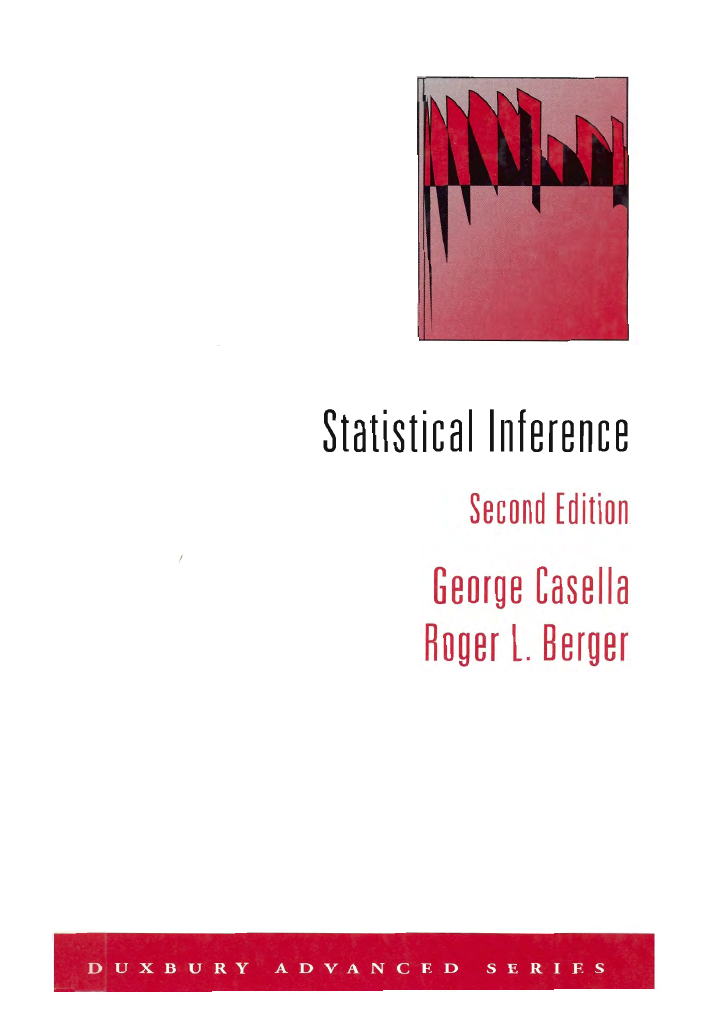
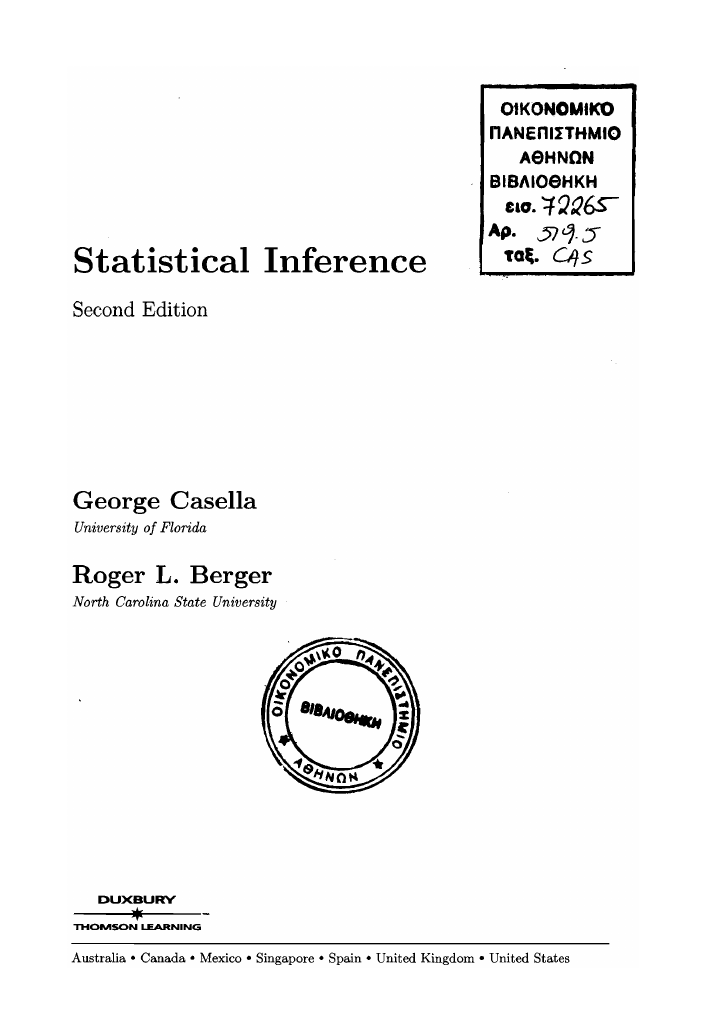
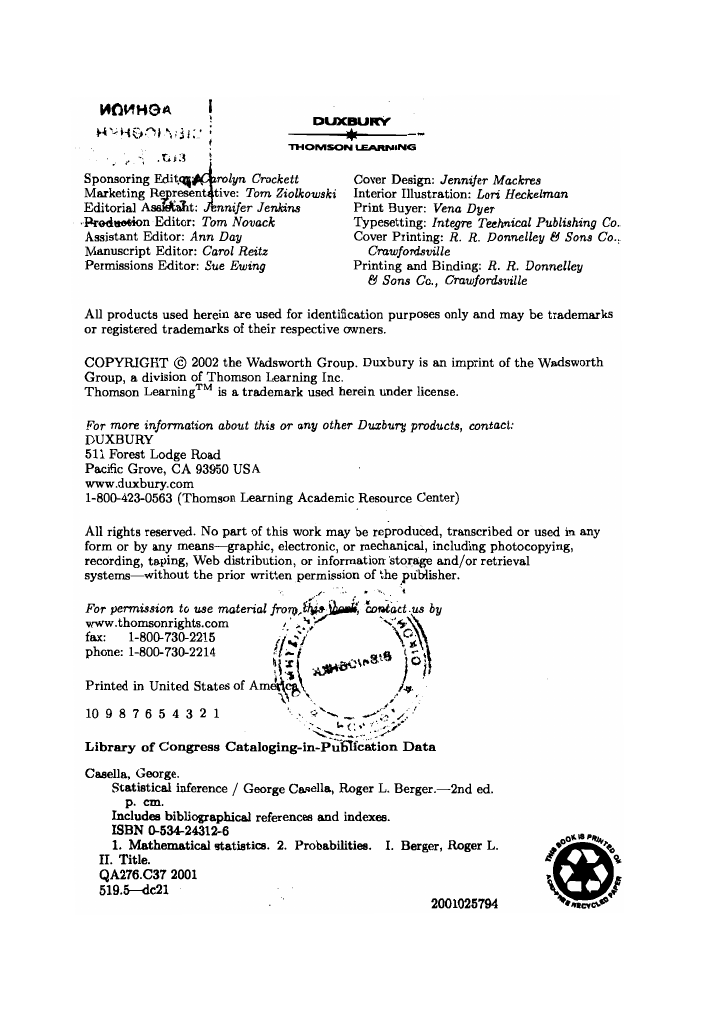

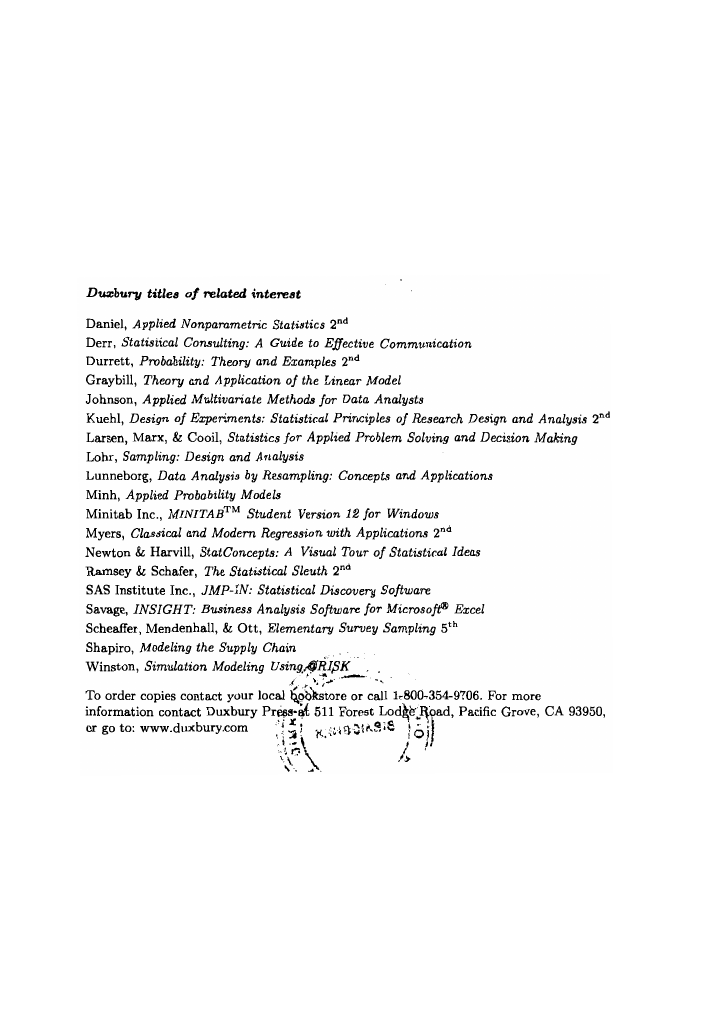
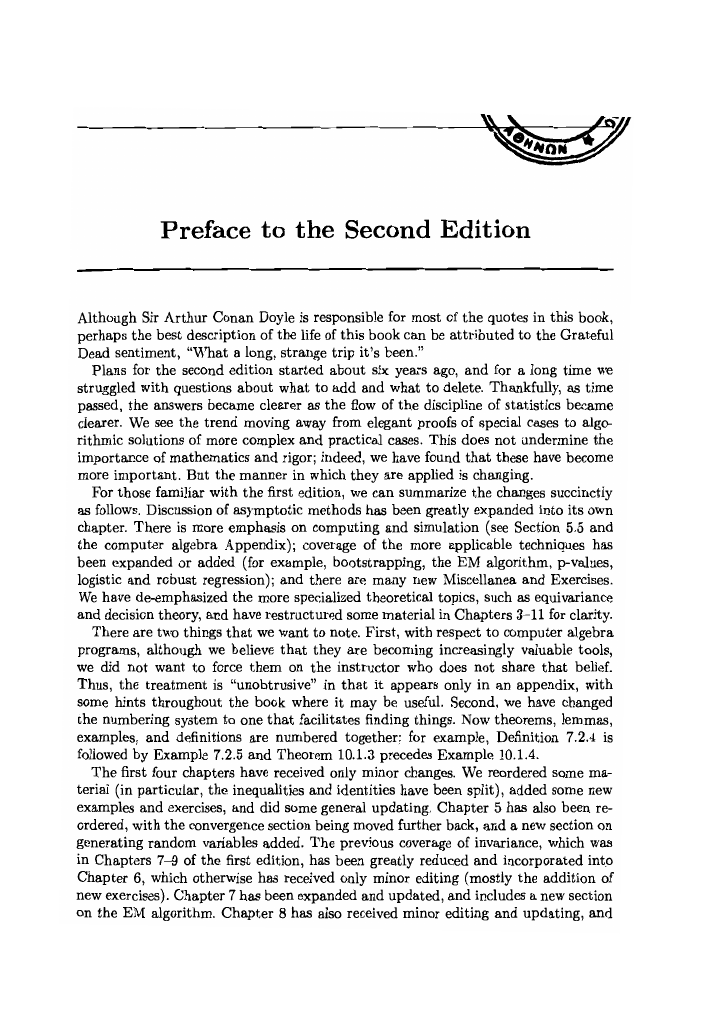
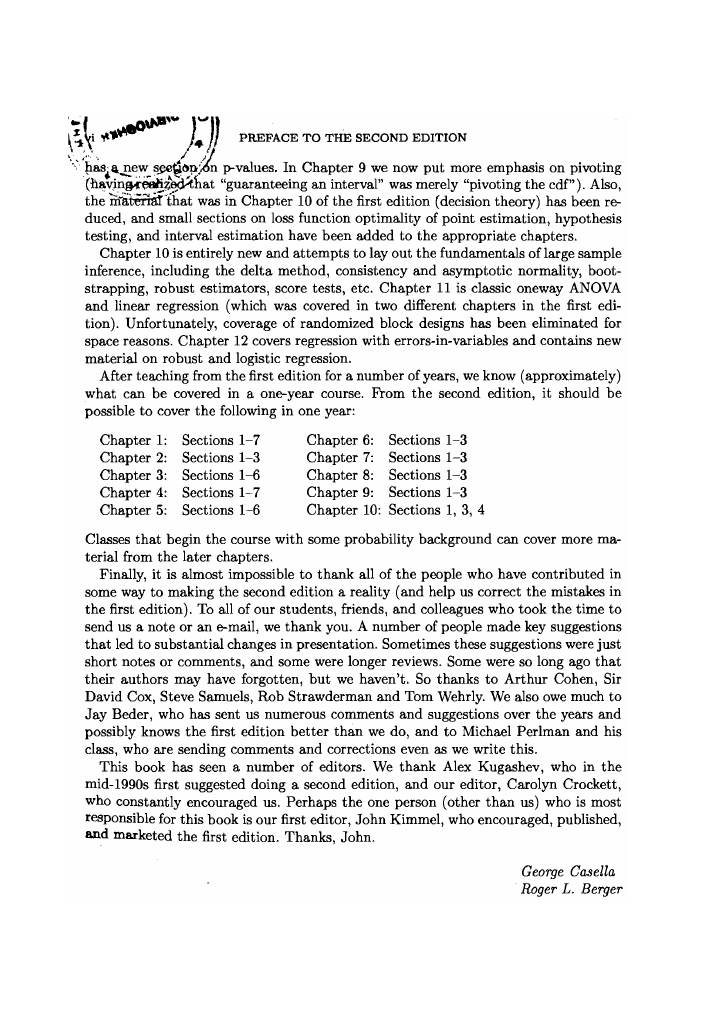
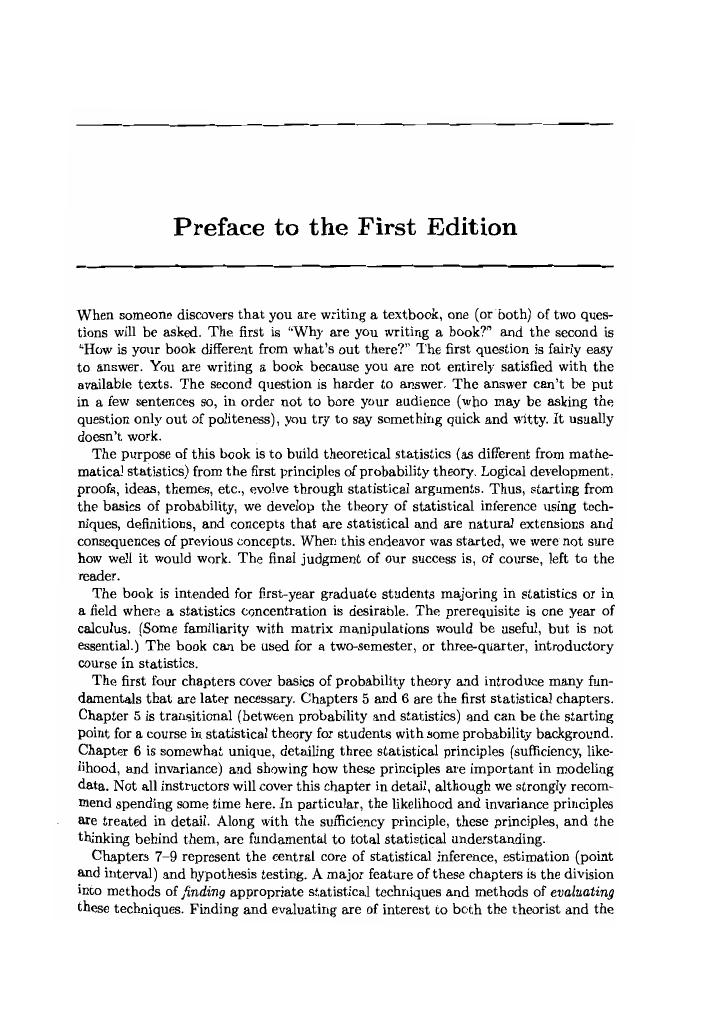








 2023年江西萍乡中考道德与法治真题及答案.doc
2023年江西萍乡中考道德与法治真题及答案.doc 2012年重庆南川中考生物真题及答案.doc
2012年重庆南川中考生物真题及答案.doc 2013年江西师范大学地理学综合及文艺理论基础考研真题.doc
2013年江西师范大学地理学综合及文艺理论基础考研真题.doc 2020年四川甘孜小升初语文真题及答案I卷.doc
2020年四川甘孜小升初语文真题及答案I卷.doc 2020年注册岩土工程师专业基础考试真题及答案.doc
2020年注册岩土工程师专业基础考试真题及答案.doc 2023-2024学年福建省厦门市九年级上学期数学月考试题及答案.doc
2023-2024学年福建省厦门市九年级上学期数学月考试题及答案.doc 2021-2022学年辽宁省沈阳市大东区九年级上学期语文期末试题及答案.doc
2021-2022学年辽宁省沈阳市大东区九年级上学期语文期末试题及答案.doc 2022-2023学年北京东城区初三第一学期物理期末试卷及答案.doc
2022-2023学年北京东城区初三第一学期物理期末试卷及答案.doc 2018上半年江西教师资格初中地理学科知识与教学能力真题及答案.doc
2018上半年江西教师资格初中地理学科知识与教学能力真题及答案.doc 2012年河北国家公务员申论考试真题及答案-省级.doc
2012年河北国家公务员申论考试真题及答案-省级.doc 2020-2021学年江苏省扬州市江都区邵樊片九年级上学期数学第一次质量检测试题及答案.doc
2020-2021学年江苏省扬州市江都区邵樊片九年级上学期数学第一次质量检测试题及答案.doc 2022下半年黑龙江教师资格证中学综合素质真题及答案.doc
2022下半年黑龙江教师资格证中学综合素质真题及答案.doc